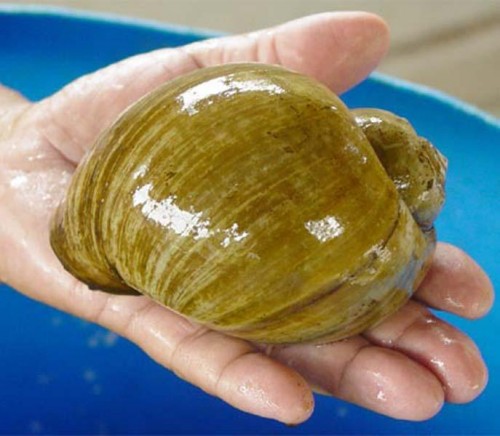Rita Hutchinson
July 31, 2008
Helen Ann Hebert Martin
August 4, 2008The LSU AgCenter has a message for owners of that exceptionally handsome gastropod, the apple snail: Don’t let it near the water.
Brought into the Houma-Thibodaux area several years ago as an aquarium pet, the adaptable snail made its way into parish waterways, ditches and ponds and is consuming vegetation, said the AgCenter’s agent for Terrebonne Parish, Barton Joffrion.
People are attracted to the snail not only because of its looks but also for its size. The apple snail is the largest freshwater snail on earth.
The apple snail mainly enjoys munching on rice plants, which is why it has flourished in the rice-growing regions around Lake Charles, but, in truth, scientists do not know where it would stop as far as devouring vegetation is concerned, Joffrion said.
The snail has taken up residence especially in Bayou Black, the Schriever area and along U.S. Highway 90 toward Morgan City, according to Joffrion, who recently spotted a cluster of eggs in Bayou Black. The species lays its eggs above water inside a hard shell to protect them from bird and fish predators.
“It will be there a while,” Joffrion said.
The apple snail also contains a parasite harmful to humans, but would have to be eaten raw to pose a threat.
The snails are noted for spending most of their time submerged.
They can breath while underwater by extending a tube above the surface.
Unlike many others in the species, apple snails are not hermaphroditic, requiring a mate to reproduce.
Joffrion said the AgCenter is working with the Barataria-Terrebonne National Estuary Program in Thibodaux and the state Department of Wildlife and Fisheries to control the new pest, trying to gather information and data.
The bayous and waterways in Terrebonne and Lafourche parishes have been infiltrated by apple snails. The world’s largest freshwater snail, it devours vegetation. The snail is especially plentiful in Bayou Black, the Schriever area and toward Morgan City. * File Photo • Tri-Parish Times








